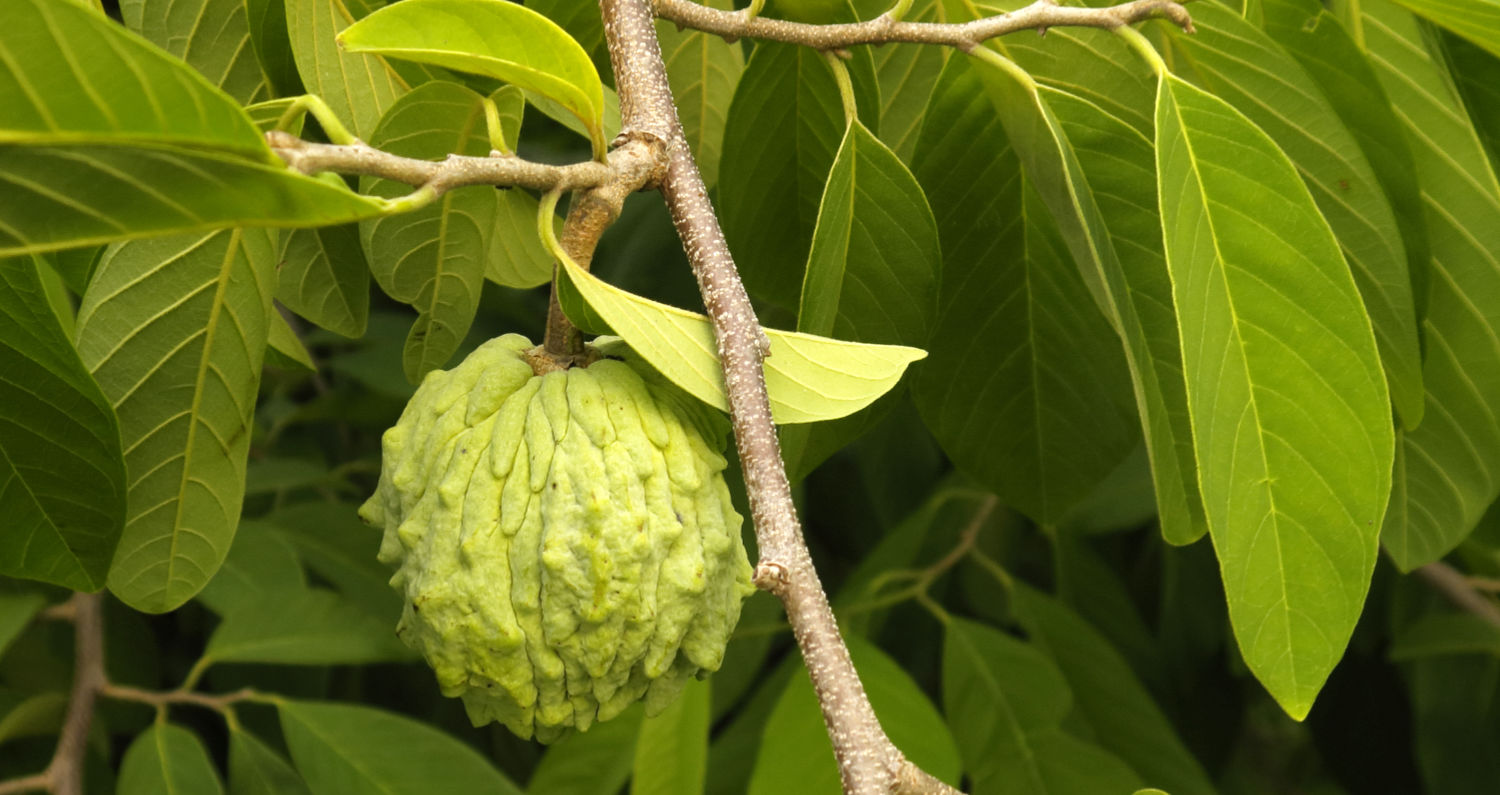Annonaceae.
Annonaceae is the Custard Apple family.
It has over 100 genera with over 2,000 species.
Most are evergreen or deciduous trees with some shrubs. Young shoots are often zigzag.
Leaves, on short stalks, are in 2 ranks, with a simple blade that is pinnately veined.
The usually solitary flowers appear to be axillary or leaf opposed but, due to the way the
shoots grow are probably terminal.
Flowers can also arise from the trunk which is known as cauliflory.
Some species have bracts at the base of the stalk.
The receptacle (the top of the stalk holding the flower parts) may be enlarged, elevated or flat and there is a
disk (a disc-like structure at the base of the ovary formed from the receptacle or stamens).
The usually pendulous flowers have a thick, fleshy perianth composed of tepals
(undifferentiated sepals and petals) or with distinct sepals and petals.
The perianth is usually in 3 whorls of 3 but can be 1 or 2 whorls.
There are up to 100 or more short stamens with the outer ones maturing first.
They are typically spirally arranged.
The anthers open via a longitudinal slit or valve that is directed outwards.
There is an anther appendage and sometimes staminodes (infertile stamens).
The superior ovary can have 10 to 100 or more carpels each with 1-10 ovules.
The carpels are usually separate and spirally arranged.
Each has a short, thick style and a papillate stigma.
To prevent self pollination all (or most of) the flowers are in the staminate phase in the morning and
the pistillate stage later in the day or the next morning.
The fruit is fleshy with quite large seeds.
Several genera produce edible fruit such as Annona and Uvaria.
J.F.


